glitterata
Ideal_Rock
- Joined
- Apr 17, 2002
- Messages
- 4,627
I know we''re not supposed to discuss fakes here, but I sort of collect antique imitation diamonds, mostly over 100 years old, and I thought it would be fun to have a thread discussing the history of what people used to imitate diamonds. I''m hoping the moderators will consider this educational and interesting enough to allow. And I''m hoping other people will post their antique diamondlike jewelry too.
My first picture shows rose-cut diamonds along with some materials used to imitate them in the late 19th to early 20th century (along with a penny to show scale).
In the middle row, third from the left, is a monogram made of platinum set with tiny rose-cut diamonds. That''s the look the rest are imitating.
The bracelet at the top is set with what the jewelry trade calls marcasites (improperly, according to Wikipedia). These are the opaque iron-based mineral pyrite. They were very popular during the early 20th century, particularly associated with the art deco style.
The bracelet at the bottom is earlier, probably the 1880s or so. It''s also set with pyrite, but in its natural form of tiny druzy crystals.
In the middle, from left to right, are the penny; another pyrite druzy piece, a late-19th or early-20th century man''s watch fob; the platinum-set rose-cut diamonds; and a button made of cut steel, a form of steel invented in the 17th (???) century or earlier? I''m not sure, but it was common throughout the 18th and 19th century, used to imitate the sparkle of rose-cut diamonds.
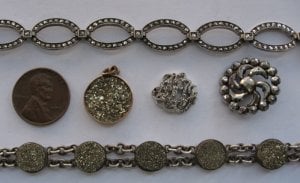
My first picture shows rose-cut diamonds along with some materials used to imitate them in the late 19th to early 20th century (along with a penny to show scale).
In the middle row, third from the left, is a monogram made of platinum set with tiny rose-cut diamonds. That''s the look the rest are imitating.
The bracelet at the top is set with what the jewelry trade calls marcasites (improperly, according to Wikipedia). These are the opaque iron-based mineral pyrite. They were very popular during the early 20th century, particularly associated with the art deco style.
The bracelet at the bottom is earlier, probably the 1880s or so. It''s also set with pyrite, but in its natural form of tiny druzy crystals.
In the middle, from left to right, are the penny; another pyrite druzy piece, a late-19th or early-20th century man''s watch fob; the platinum-set rose-cut diamonds; and a button made of cut steel, a form of steel invented in the 17th (???) century or earlier? I''m not sure, but it was common throughout the 18th and 19th century, used to imitate the sparkle of rose-cut diamonds.


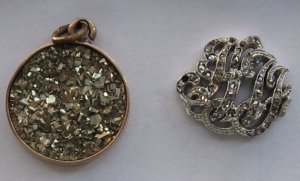
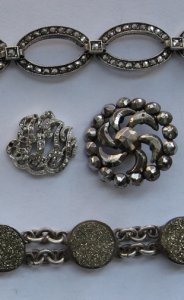
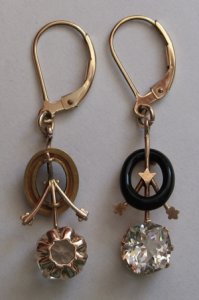
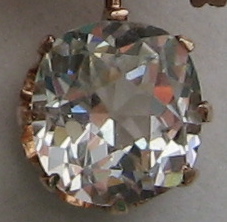
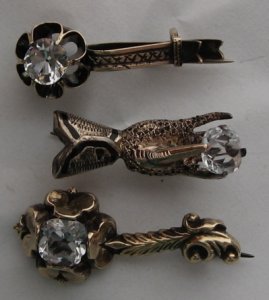
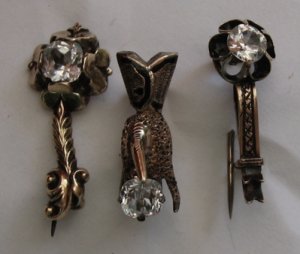
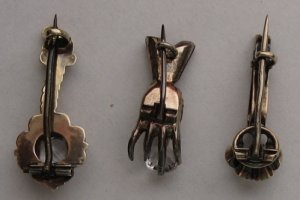
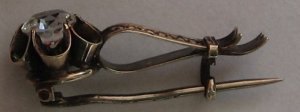
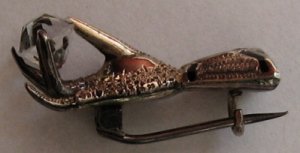
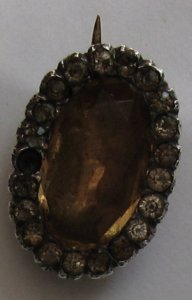
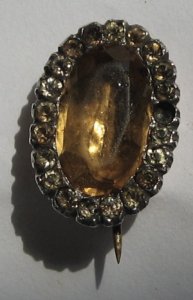
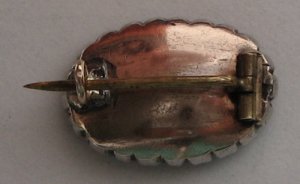

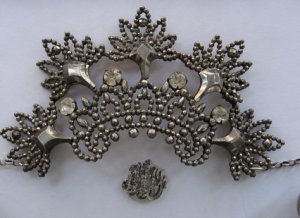





300x240.png)